In November last year, we reviewed the Peugeot 2008 GT and loved it. Fantastic engine, excellent driving dynamics, comfort, and superb looks (especially in Orange Fusion).
2021 brings a refresh to the hatchback that the 2008 is based on, the Peugeot 208. If ever you wanted to show someone what a crossover is, simply compare the 208 to the 2008. One is a hatchback body, and one is SUV, and otherwise? Almost identical.
So, would that mean I’d love the 208 GT less, the same, or more than the 2008 GT? It was time to spend 750Km in this car to find out.

What We Like and Dislike About The 2021 Peugeot 208 GT
| Pros Great sounding engine Performance Handling Superb ride Tight turning circle Design Great fun to drive Excellent commuter | Cons Transmission not the smoothest No brake auto-hold Audio reverts to radio Traffic sign recognition No adaptive cruise control |
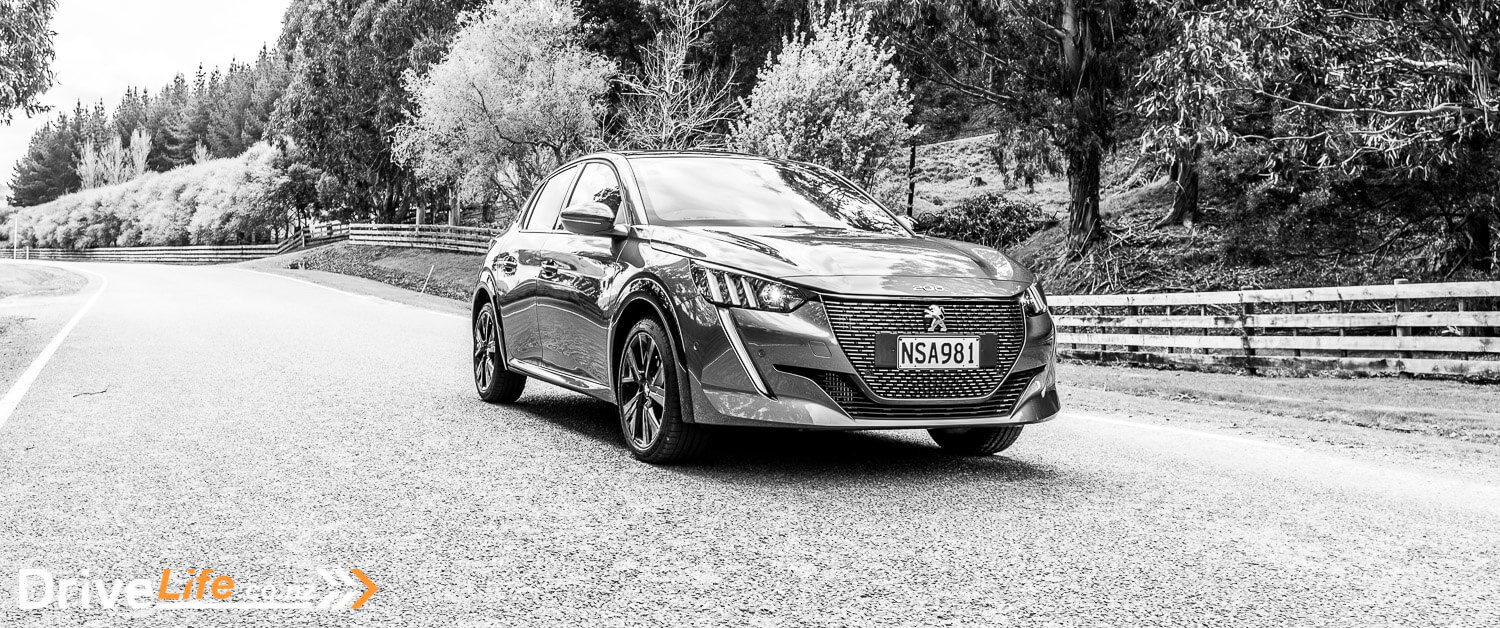
What’s In The 2021 Peugeot 208 Range?
There are all of two models in the 208 range, making your choice easy. In fact, it’s made even easier by the drivetrain choice: petrol or electric.
So, buyers in New Zealand get to pick from the 208 GT (our test car) or the 208 GT Electric (aka e-208).
Naturally, there’s quite a price difference between the two, with the GT starting at $37,990, and the GT Electric at $59,990. That’s a huge difference in cost, some $22,000, although the e-208 is eligible for the $8,625 Clean Car Rebate.
2021 Peugeot 208 GT – Standard Equipment Highlights
- Heated and power-folding electric mirrors
- Frameless, auto-dimming rear-view mirror
- Electric park brake
- Front and rear parking sensors
- Peugeot 3D cockpit with a 10” display
- Ambient lighting
- Alloy pedals and stainless steel sill covers
- Full-grain perforated leather compact steering wheel
- LED interior lights
- Speed limit sign recognition
- 6 airbags
- Hill-start assist
- Forward collision warning
- Blind-spot monitoring
- Tyre pressure monitoring
- Cruise control
- Driver attention alert
- 3D Peugeot Claw design rear LED taillights
- Automatic lights and wipers
- Heated front seats
- Welcome and Follow Me Home light functions
- LED headlights with high beam assist
- LED DRLs with Claw design
- Apple CarPlay and Android Auto
- Qi wireless phone charging
- 6-speaker audio
- A 10” central touchscreen
- Active emergency braking with night function and pedestrian/cyclist detection
Optional Extras on our 2021 Peugeot 208 GT Review Car
Nimbus Grey paint – $550
Total as-tested cost: $38,540
The petrol model has twin chrome exhaust tips and lane keep assist, while the GT Electric changes its rims to 17” SHAW diamond-cut allows, has Dichroic badging including the front Lion logo and ‘e’ monograms, semi-autonomous lane keep assist, a car alarm, and adaptive cruise control with stop/go function.
Colour selections are reasonable, with Faro Yellow ‘free’ but any other colour an extra $550 or $950. Those more expensive colours are Nimbus Grey, Nera Black, Cumulus Grey, Elixir Red, Peral White, and Vertigo Blue.
Check out the Peugeot New Zealand website for more 208 information.

How Does The 2021 Peugeot 208 GT Compare To Its Competition?
| Brand/Model | Engine | Power /Torque kW/Nm | Seats | Boot Space (litres) | Fuel L/100km | Price |
| Honda Civic RS Sport Sensing | 1.5-litre, 4-cylinder turbo petrol | 127/220 | 5 | 414 | 6.0 | $40,990 |
| Ford Fiesta ST Hatch(manual) | 1.5-litre, 3-cylinder turbo petrol | 147/290 | 5 | 311 | $39,990 | |
| Peugeot 208 GT | 1.2-litre, 3-cylinder turbo-petrol | 96/230 | 5 | 311 | 6.3 | $37,990 |
| Mazda2 Limited | 1.5-litre, 4-cylinder turbo petrol | 82/144 | 5 | 250 | 5.3 | $30,895 |
| Suzuki Swift Sport | 1.4-litre, 4-cylinder petrol turbo | 103/230 | 5 | 265 | 6.1 | $30,500 |
| Toyota Yaris ZR Hatch | 1.5-litre, 3-cylinder petrol | 85/145 | 5 | 270 | 4.9 | $29,990 |
| Skoda Fabia Monte Carlo | 1.0-litre, 3-cylinder turbo petrol | 81/200 | 5 | 330 | 4.8 | $29,990 |
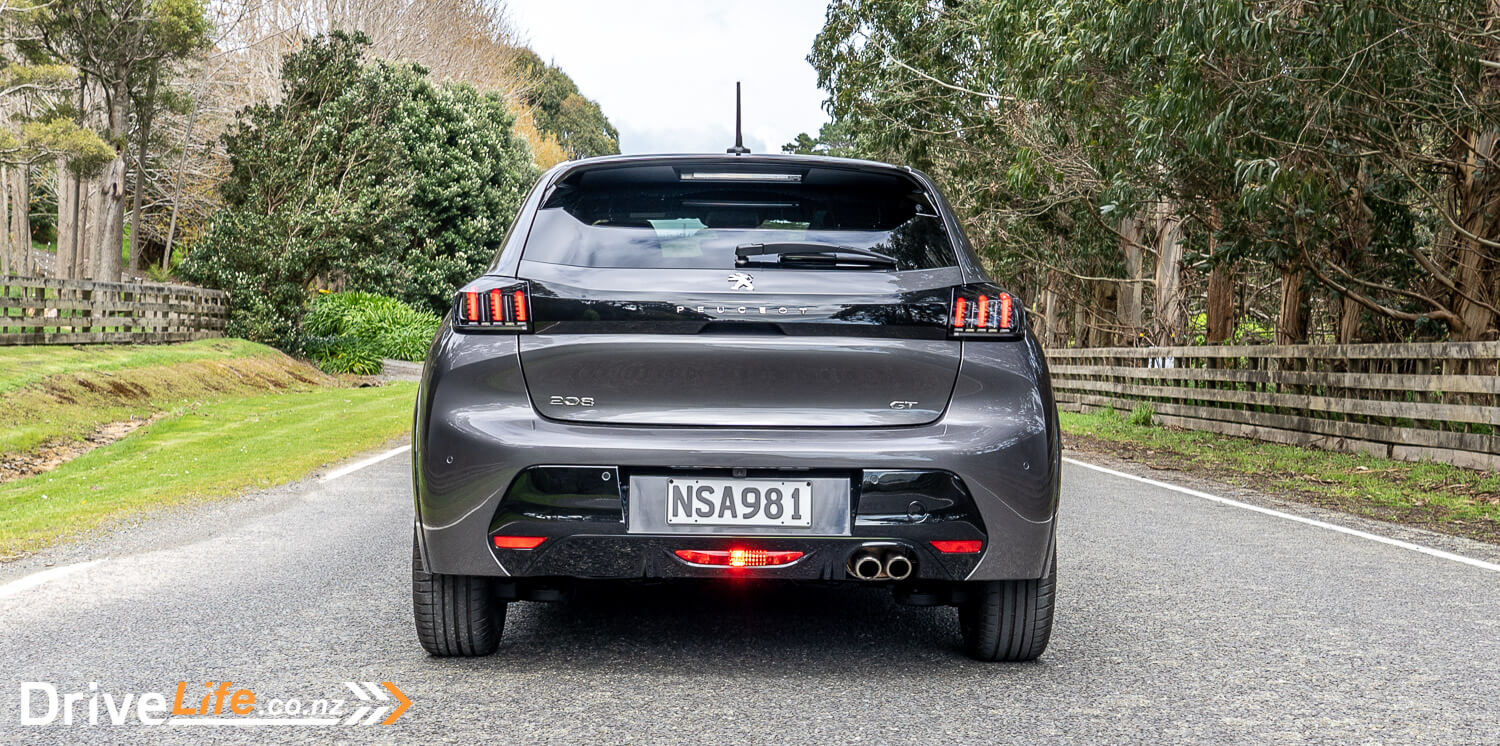
First Impressions Of The 2021 Peugeot 208 GT
When I rocked up to pick up our test car, right out front of the dealership was a 208 GT, finished in Faro yellow. Internally, I was shouting with joy. After far too many grey and silver cars, that yellow 208 GT was going to absolutely pop out from the page on this review.
But no, the Faro yellow was not meant for me, and instead, I drove off in a 208 GT finished in Nimbus Grey. Such a shame, but the 208 still can show off some awesome lines in any colour. The front looks like a 508 that’s been through a compression cycle, but I must admit the proportions are just right, and I love those ‘3-Claw’ LED headlights. While this car’s grille has grown in size, as has been the trend in so many cars over the last few years, it actually suits the car and is not too overpowering (Cough! Lexus! Cough!).

The sides of the car have come through a redesign well too, with nice scalloping to the lower parts of the doors, and that little bit of scalloping for the GT badge on the C pillar? Brilliant. It’s little touches like this that can make a car stand out.
And let’s not forget those rims. Again, that little touch of black plastic added to the wheel spokes complements the overall design, and they look good.
Around the back, the triple flavouring is carried over to the ‘claw effect’ taillights, giving the car some nice symmetry.
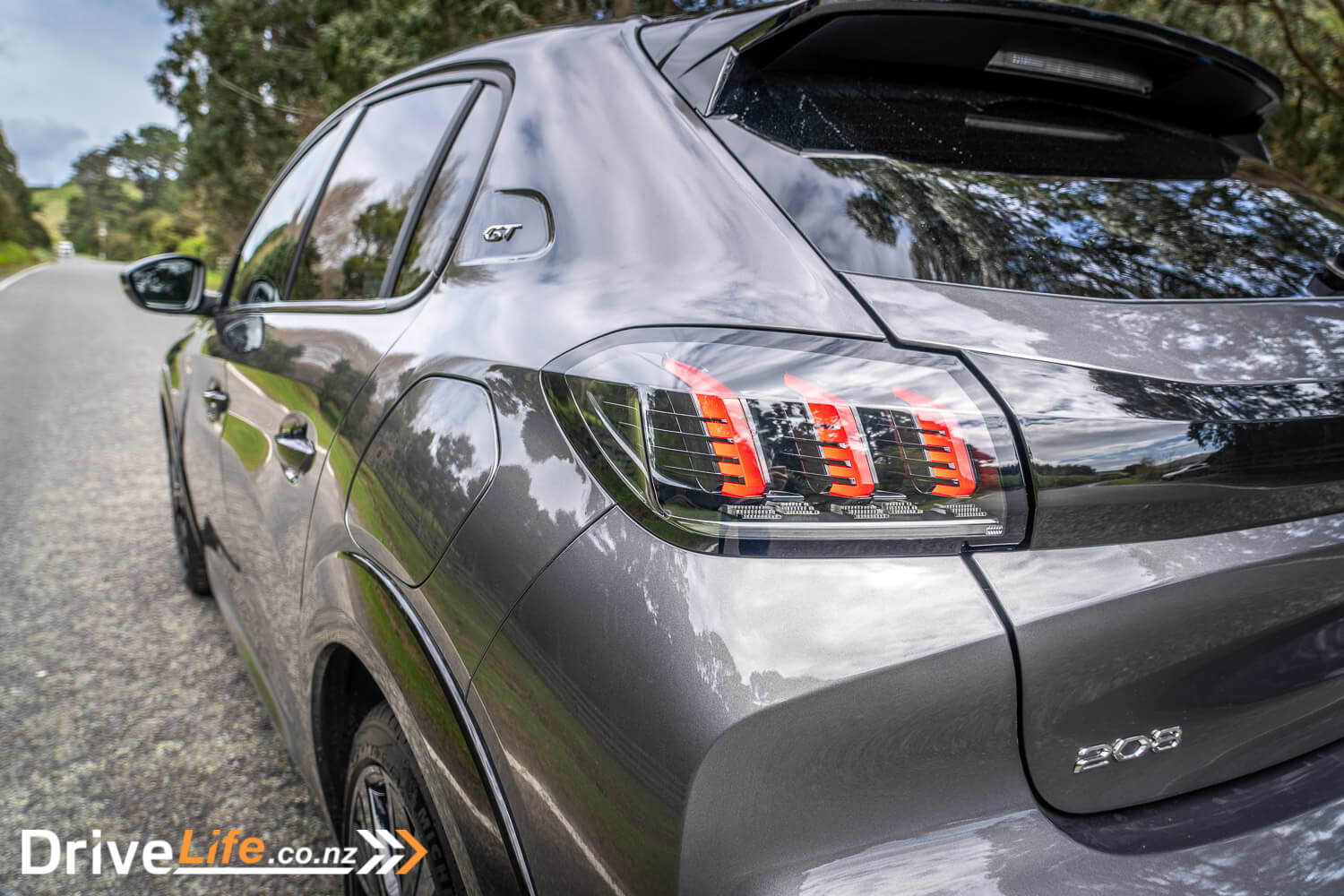
What’s The Interior Like On The 2021 Peugeot 208 GT?
The interior of the 208 GT is all a bit DeJa’Vu after being in the 2008 GT. It’s hard to see any differences, not that I expected to. The interior definitely feels smaller than the SUV model, but thankfully, there’s a panoramic sunroof to help lift the inside a bit, otherwise it’d feel fairly claustrophobic.
Actually, after I dropped our test car off, I had the e-208 for a day and that model does not have the sunroof. While it does have much lighter-coloured seats, it felt much smaller inside compared to its petrol-powered sibling. That panoramic sunroof doesn’t open, but it does have a manual blind if the sun gets too much.
Up front is that tiny, sexy steering wheel that’s installed in Peugeot models that have their 3D i-Cockpit with ‘configurable 10″ head-up digital instrument panel’. This isn’t a true heads-up display; instead Peugeot have moved the whole instrument binnacle up high, so it’s almost in direct line of sight for the driver. It works well but does mean the steering wheel is quite low down so the driver can see over the top of it. You get used to it quickly, and then getting into another car makes you feel like you are driving a bus. The top of the wheel is flat, as is the bottom (along with a nice ‘GT’ badge), is finished in perforated leather, and feels great to the touch.

Speaking of tiny, don’t get your hopes up to fit too much of your stuff into the glovebox. A few pairs of gloves, and that’s your lot in the 208 GT. The glovebox lid is large, but the storage space is not.

Down on the centre console under the dash is the Qi wireless charging pad; I like that Peugeot has put a cover over this, so when you close it, the temptation to check on that text coming in is reduced. Like the 2008 GT, the cover is useful too, so if it’s down it’s the perfect place for a pen to sit.

Beside the Qi pad (but not under the cover) are both USB-A and USB-C ports, and it’s great to see more brands including both in cars. The whole top of the centre console is made of plastic finished in piano black, so you just know that’s going to be covered in fingerprints quickly. The rear of the console has a small cubby, but a nice party trick is that there’s storage under the cubby, that goes up and under the cup holders. I guess on the negative side, this is a place where you could easily forget you have put something, so true when I found the previous motoring journalist’s credit card tucked up in there, along with a single sock. Don’t ask.

The centre touchscreen is half integrated, but like the 2008 I wish they had mounted it lower, integrated it, and moved the air vents up to where the screen is now. It’s more practical to have the vents higher and would bring the screen closer to the driver/passenger. Maybe in the next update we’ll see this.

There’s some nice textures used in the cabin, including some fake (but tasteful) carbon fibre on the doors and dash, with contrasting green stitching on the sears, doors, and steering wheel. There is still a lot of black plastic about the cabin, but overall it feels sort of classy and well finished.
Rear seat passengers get access to two USB-A ports, but headroom is a bit limited back there. Legroom is average for the class, but usable.

Understandably, there’s less boot space in the hatchback compared to the SUV model, 311 litres vs. 434 litres. Still, that’s more than a Corolla, the boot is relatively deep, and has a low-loading height too.
There’s a space-save spare under the floor, so that’s one up over only having a pump.
What’s The 2021 Peugeot 208 GT Like To Drive?
Once again, it’s all about the engine. That tiny 1,200cc, three-cylinder, turbocharged engine in this car makes it a blast to drive. Instantly, my day was made brighter by getting behind the wheel of the 208 GT. It sounds incredible, and everyone will be surprised at how much punch this diminutive engine has. It’s not all about the power; at 96kW, that’s not a lot. But it is about the torque; with 230Nm, the 208 GT is ready to go anywhere, anytime, at any revs. While 230Nm of torque seems a lot for just 1.2 litres of engine (and it is), the way the torque is delivered is near-on perfect. Maximum torque is at just 1,750rpm – that’s diesel numbers, right there – and it’s simply so usable.

As a city car then, the 208 GT nails it. It’s quick away from the lights, and a breeze to commute with on the motorway, with effortless passing. And while the engine makes delicious noises that only a 3-cylinder can, at 100km/h it is quiet as a mouse. In fact, at a steady throttle at any speed the engine is refined and polite. Then if you want or need to, wind it out past 4,000rpm towards the 5,500rpm redline to hear the best of it. It really is a superb power plant.

With so much torque, the car easily copes with Eco mode, although the car will always default to Normal drive mode when you start it. The other drive mode is Sport, and this really peps up the step of the 208 GT; the gearbox changes its character completely, and the car goes from fun city car to wannabe go-kart. It’s an eager drive mode; a little too eager sometimes, reminding me of the Hyundai Kona N Line I had recently.

Mated to that engine is a 6-speed automatic transmission. Honestly, I thought Peugeot had put a dual-clutch automatic into the 208. It’s not jerky, but it’s not as smooth as a torque-convertor automatic should be. Downshifts can be a little clunky, too.
That doesn’t really affect the 208 GT’s ability to commute though, with reasonable visibility, blind spot monitoring and walk-away lock or walk-up unlock, it’s a very easy car to live with. All the controls are nice and light to use, and the steering firms up nicely at speed.
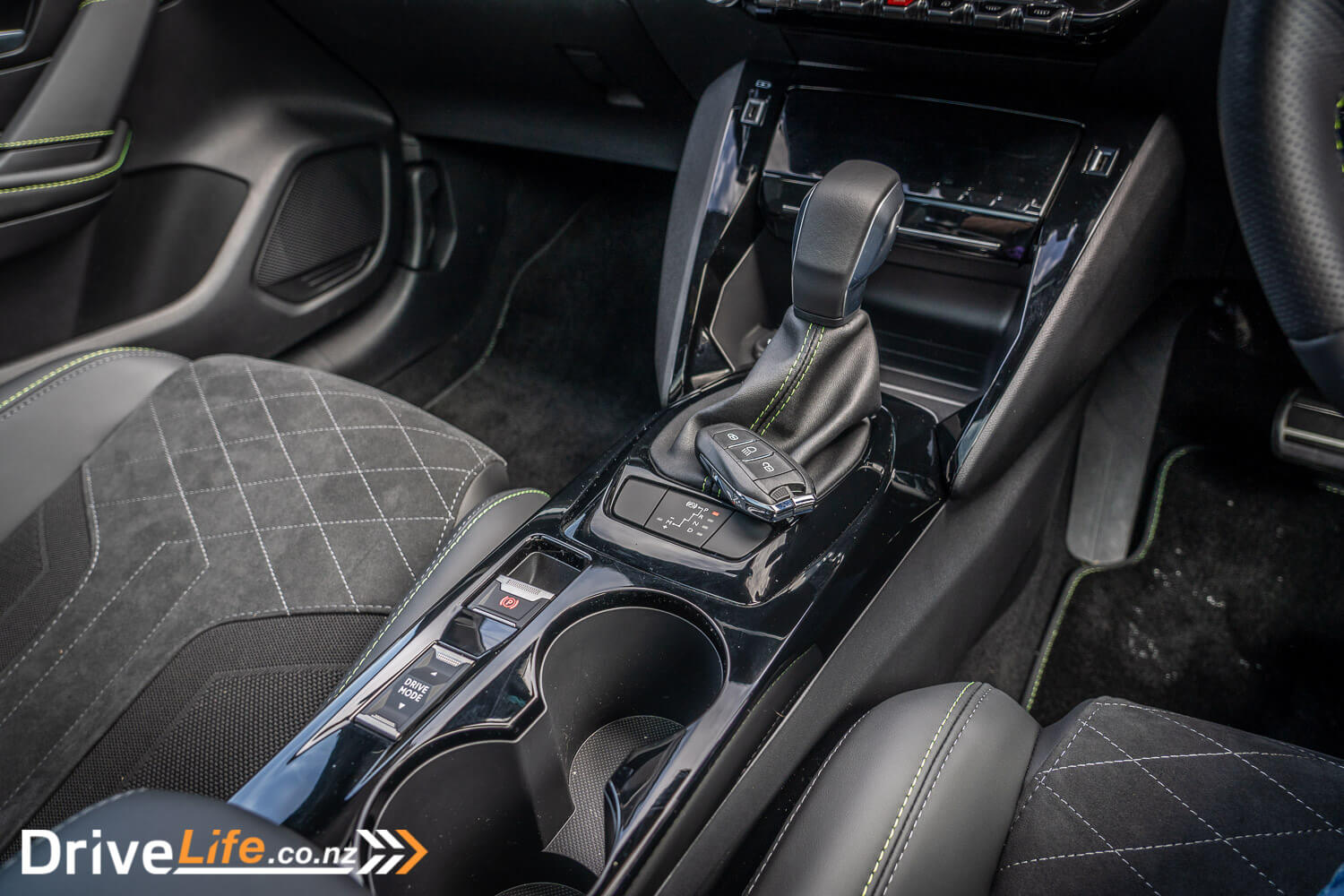
Another huge bonus that makes the car easy to live with is the ride quality. It’s outstanding. To make such a light car ride this well is a huge achievement, and every passenger in the car noticed just how smooth the 208 GT is on bumpy city roads.
The 208 GT is fitted with an electric park brake too, but like the 2008, there’s no auto-hold function, which would have made commuting that much easier.
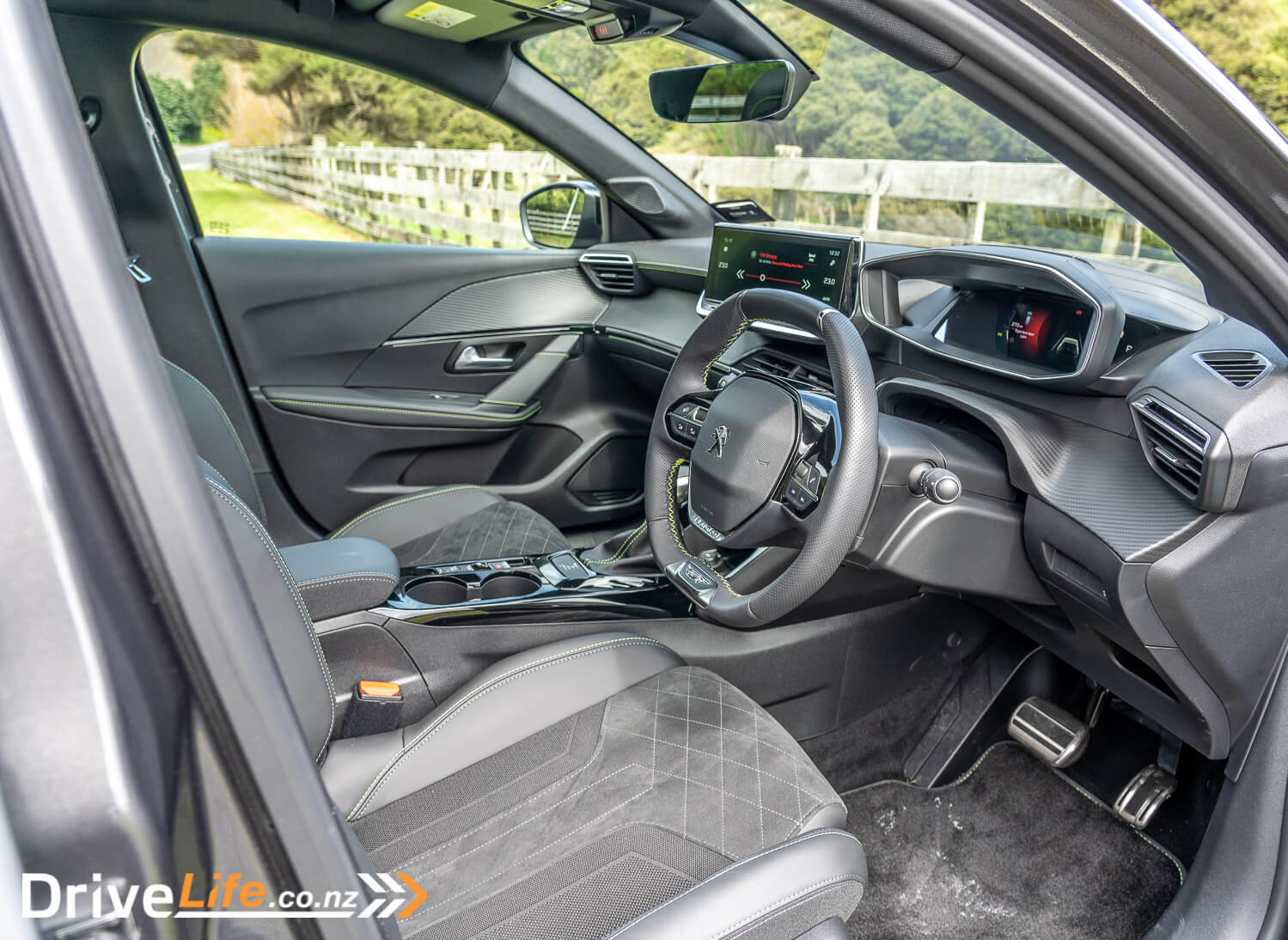
So what about Peugeot’s 3D i-Cockpit? It’s unchanged, so has the benefit of being different and a little funky, but still quite usable. The 3D effect is definitely there, but how much it actually improves the driving experience? I think the jury’s out on that one. It’s a neat trick to show people, and there are a number of displays you can pick from, that are Driving, Navigation, Minimum, Personal1, Personal2, and Dials. The Personal2 dashboard gives you a ‘Level of Vigilance’. I went to check in the manual of exactly what this is, but there wasn’t a manual in our test car.
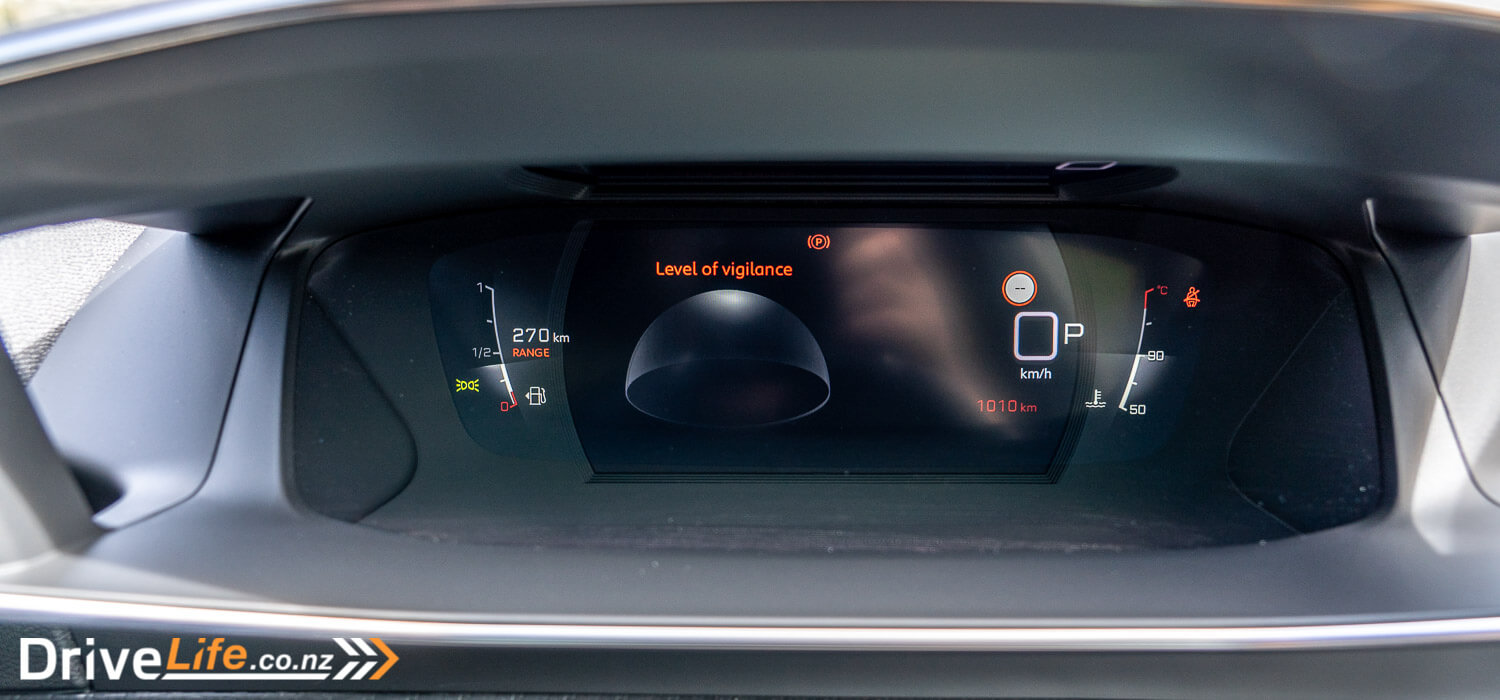
Changing the dashboard can be a little slow, mainly down to the animations that take place while the screen changes over.
We had to take a trip over to Masterton during my time testing the 208 GT, so this would be a nice way to check the car out on the open road, over a 250Km drive. Other than things already mentioned like the ride and engine, there were some other standouts from that trip. The seats are supremely comfortable, and have just the right amount of side support to keep you in place on twisty hills like the Remutakas.

It was the first time I had really felt those Michelin Pilot Sport 4 tyres working hard too. They’re a great all-round performance tyre, and while they can be noisy on coarse-chip seal, they grip extremely well. On the 208 GT they’re not massively wide at 205mm and not very low profile at 45%, but they suit the 208 GT perfectly. The overall handling is better than the 2008 GT SUV, I’m guessing down to the lower stance, and possibly the extra 100Kg of weight the SUV carries. The 208 GT will move to understeer if you push it hard enough, but it’s a bundle of fun in a small package, which is what a small car should be – fun. It’s so composed in the corners, most drivers will be able to make the most of this car without getting into too much trouble.

Like the Renault Megane R.S. Trophy we recently tested, of course the 208 GT has a Euro gear lever; want manual mode? Shift the lever to the left, away from you. Those with longer legs than mine might find the lever a bit of a stretch away, and there’s no shift paddles to use. Working on its own, the automatic does just fine though.

Well, surely it can’t be perfect? It’s not – I mentioned the transmission, and there are a few other vices, but not many. My most frustrating one is that the audio reverts to the radio when you get back in the car. I thought we’d left this problem behind a few years ago, but no, the 208 GT does just that. Not the end of the world, but like the lack of brake auto-hold, it took some of my enjoyment of the car away. The 208 GT does have a 360-degree camera, but it’s not the clearest on the market, and you can’t switch it on manually.

Traffic sign recognition is pretty rubbish, just as it is on the 2008 GT. It is often wrong, so don’t try relying on it; “but officer…” The centre screen is a good size at 10”, but some of the side real estate of the screen is used for things like the AC settings. This means the actual usable space is more like 7”. As I mentioned in the 2008 GT review, the AC is a bit of a pain, as you have to hit the AC toggle switch to bring up the settings to change them. There’s only two AC settings you can do by switches; AC on or off, and recirculating air on or off. Everything else is done on the screen. There’s no adaptive cruise control either, so this is one thing the 2008 GT has over the 208 GT.

Back to the positives – the turning circle is very tight, again making it a great city car. Those toggle switches on the dash look and feel great, and are similar to MINI. They give the cockpit a bit of an aircraft feel.
With sparkling performance, you’d think that fuel economy would suffer quite badly. After all, that is a small engine to be hauling a 1,200Kg car around and add in a turbo and you might think that it would sit up there with two-litre cars for fuel consumption. I drove 750Km in the little 208 GT, and it used 7.0L/100Km of premium fuel. That’s not far off Peugeot’s figure of 6.3L/100Km, and I was happy with the number I got, and it’s also almost exactly the same as the 2008 GT, that did 7.1L/100Km.

2021 Peugeot 208 GT – Specifications
| Vehicle Type | 5-door small hatchback |
| Starting Price | $37,990 |
| Price as Tested | $38,540 |
| Engine | 1.2-litre, 3-cylinder turbocharged petrol |
| Power, Torque kW/Nm | 96@5,500rpm 230@1,750rpm |
| Transmission | 6-speed automatic |
| Spare Wheel | Space-saver |
| Kerb Weight, Kg | 1,159 |
| Length x Width x Height, mm | 4055x1745x1430 |
| Cargo Capacity, litres Seats up/seats down | 311/1,106 |
| Fuel capacity, litres | 44 |
| Fuel Efficiency, L/100Km | Advertised Spec – combined – 6.3 Real-World Test – combined – 7.0 Low Usage: 0-6 / Medium Usage 6-12 / High Usage 12+ |
| Turning circle, metres | 10.4 Small: 6-10m / Medium 10-12m / Large 12m+ |
| Warranty | 5-year/100,000km PEUGEOT vehicle warranty 5-year Roadside Assistance |
| ANCAP Safety Ratings | Ancap rating: Not yet rated Rightcar.govt.nz: 5 Star |




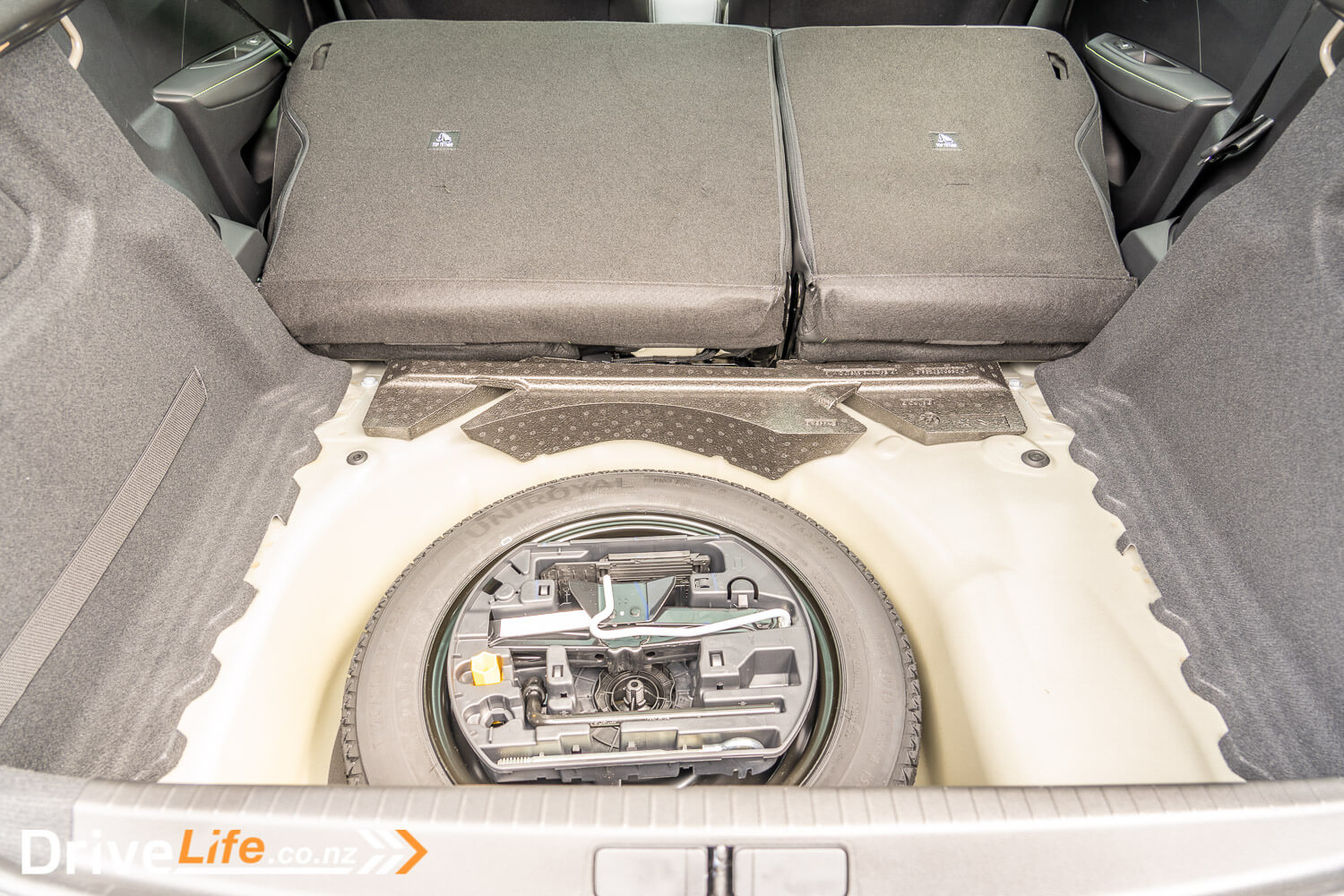

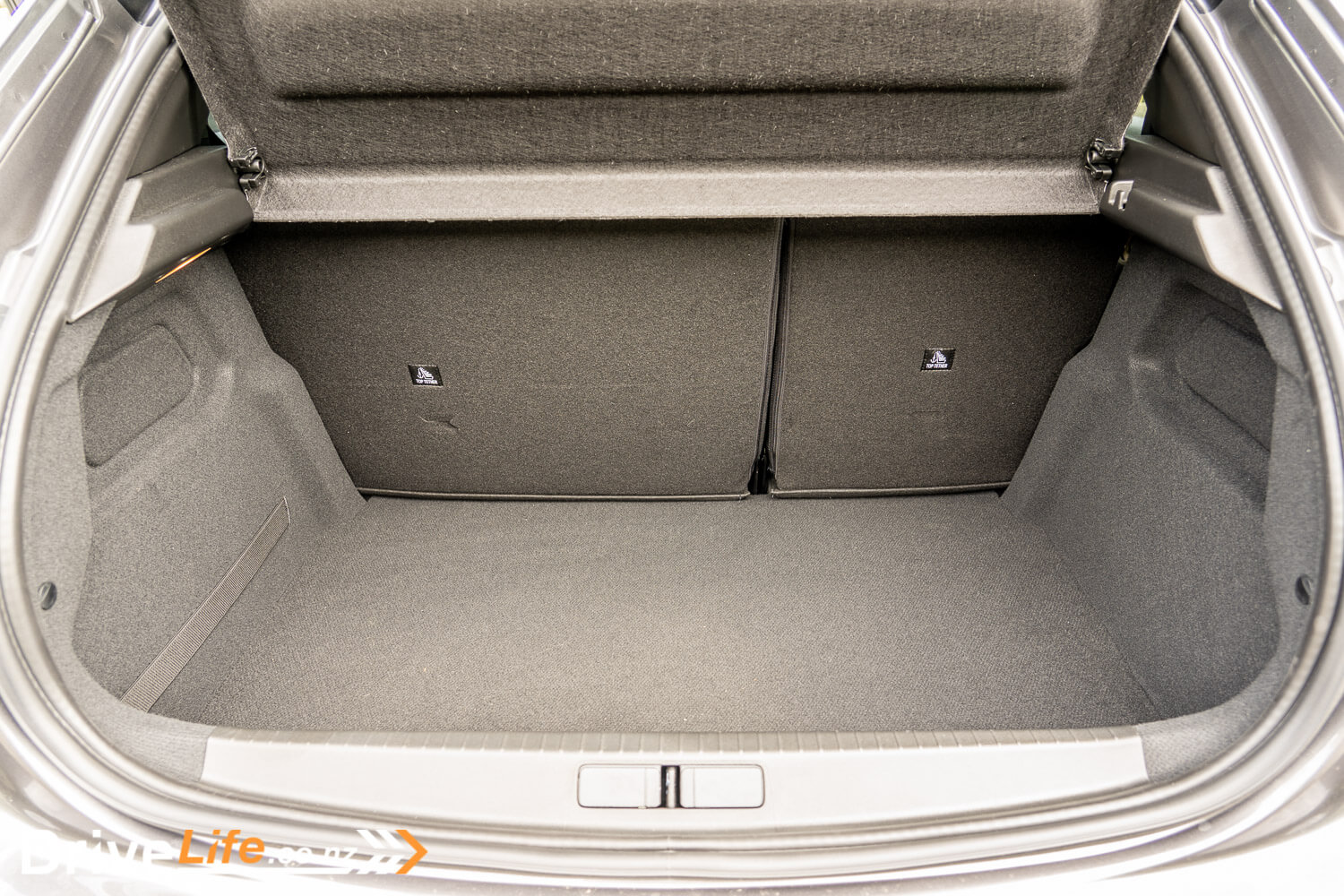

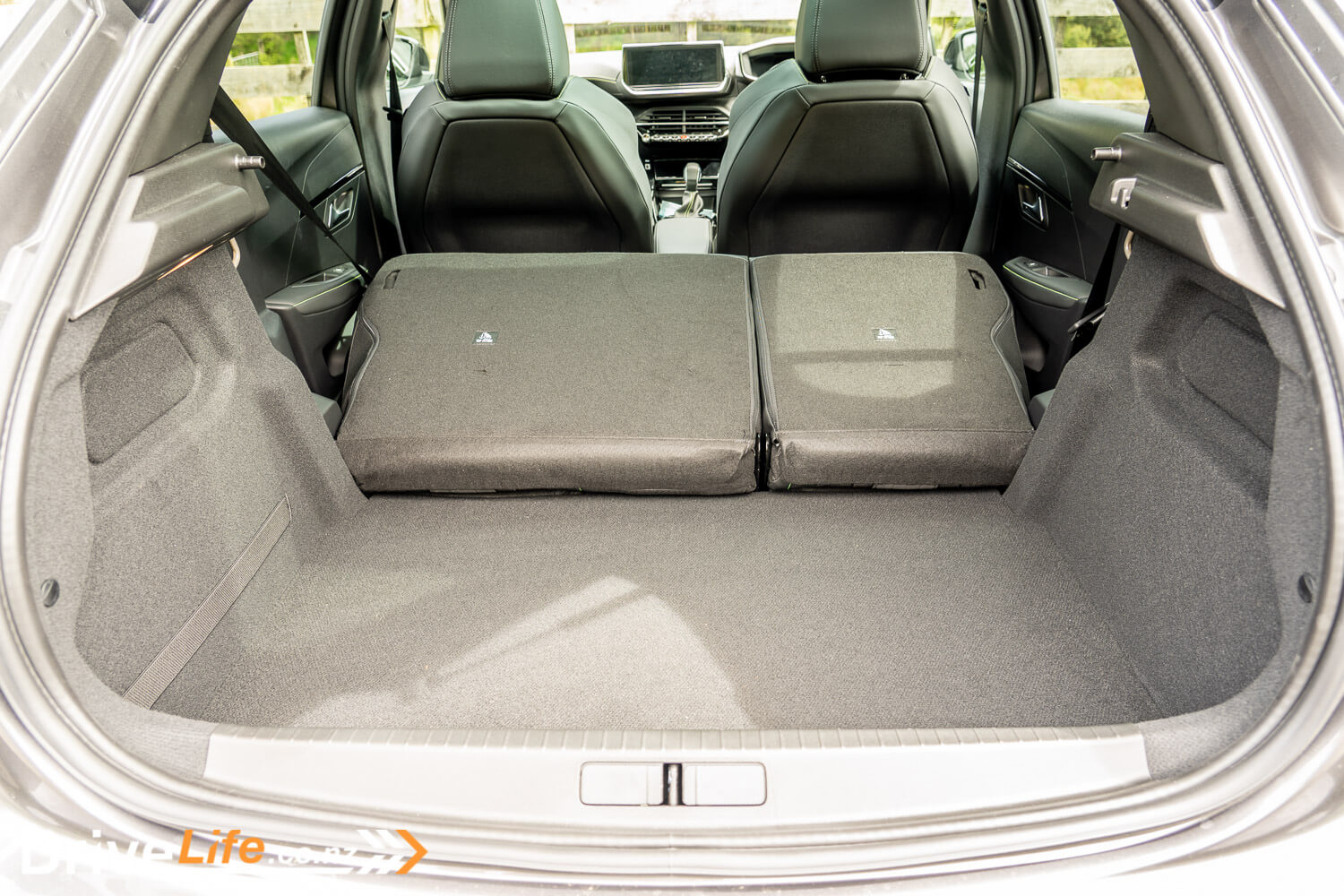


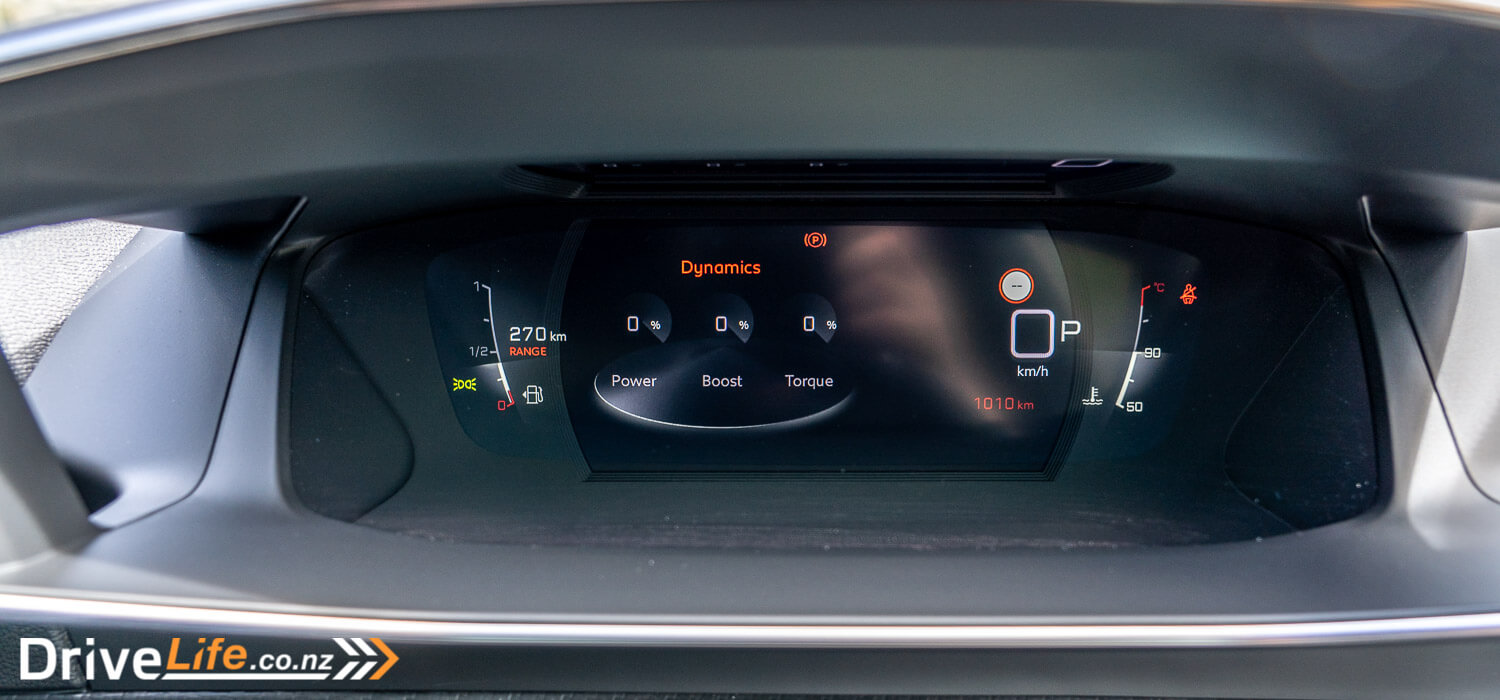













































I had the pleasure of driving one of these in the UK.
It’s sad that NZ misses out on the diesel, a manual gearbox and 2 gears in the auto plus shift paddles.
Hi James
Agree with you! Love a manual ‘box, but we barely get a handful each year to test. A sign of the times, but such a shame.